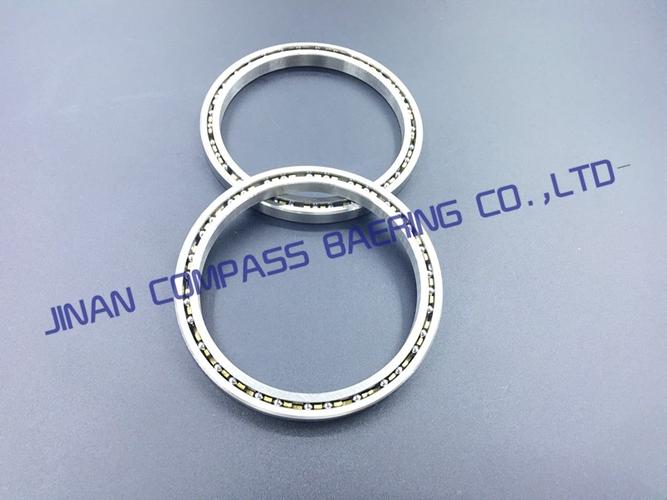Top 5 Industrial Applications of Ball Bearings: Key Uses and Benefits
Ball bearings are precision-engineered components designed to reduce rotational friction and support axial and radial loads in industrial machinery. Their ability to enhance operational efficiency, minimize energy loss, and extend equipment lifespan makes them indispensable across diverse industries. This article explores critical applications of ball bearings in modern engineering and manufacturing sectors.
Table of Contents
1. Ball bearings in automotive manufacturing2. Aerospace applications of ball bearings
3. Medical equipment ball bearing uses
4. Robotics and automation bearing solutions
5. Heavy machinery ball bearing systems
1. Ball bearings in automotive manufacturing

Ball bearings play a pivotal role in automotive systems, supporting critical components from wheel hubs to transmission systems. High-performance bearings withstand extreme temperatures and pressures in engines, while precision variants enable smooth operation in electric vehicle motors. Advanced ceramic hybrid bearings are increasingly used in racing applications due to their lightweight properties and thermal resistance. Manufacturers prioritize bearings with specialized seals and lubrication to combat road contaminants, ensuring optimal vehicle performance and safety across millions of rotational cycles.
2. Aerospace applications of ball bearings
Aerospace engineering demands bearings that operate reliably in extreme conditions. Aircraft landing gear systems utilize large-diameter bearings capable of handling intense impact loads, while engine components require bearings with exceptional heat resistance and minimal thermal expansion. Spacecraft applications employ vacuum-rated bearings with specialized coatings to prevent cold welding in zero-atmosphere environments. Strict certification standards govern aerospace bearing production, emphasizing material integrity and precision tolerances to ensure mission-critical reliability in both commercial and military aviation sectors.
3. Medical equipment ball bearing uses
In medical technology, ultra-clean ball bearings enable precise movement in surgical robots and imaging devices. MRI-compatible bearings made from non-magnetic materials prevent interference with diagnostic equipment, while sterilizable bearings meet stringent hygiene requirements in operating theaters. Dental handpieces incorporate miniature bearings capable of sustaining 400,000 RPM speeds, demonstrating the precision required in healthcare applications. Manufacturers employ cleanroom assembly processes and biocompatible lubricants to meet FDA regulations, ensuring patient safety and equipment longevity in life-saving medical devices.
4. Robotics and automation bearing solutions
Modern robotics rely on high-accuracy bearings for repeatable positioning in automated systems. Collaborative robots (cobots) utilize low-friction bearings for energy-efficient movement, while industrial robotic arms employ heavy-duty bearings capable of multi-axis motion. Precision angular contact bearings enhance accuracy in CNC machinery, and anti-backlash variants improve positioning in automated assembly lines. Smart bearings with embedded sensors are emerging in Industry 4.0 applications, providing real-time data on vibration, temperature, and load conditions for predictive maintenance strategies.
5. Heavy machinery ball bearing systems
Mining and construction equipment depend on ruggedized bearings designed for shock absorption and contamination resistance. Oversized tapered roller bearings support massive loads in excavator swing systems, while multi-row bearings enhance stability in wind turbine generators. Agricultural machinery employs corrosion-resistant bearings with enhanced sealing to withstand harsh outdoor environments. Recent innovations include IoT-enabled bearings that monitor load distribution in real-time, helping prevent catastrophic failures in critical infrastructure projects and industrial megaprojects.
From precision medical instruments to earth-moving machinery, ball bearings prove essential across industries. This article has examined five critical applications demonstrating their versatility: automotive systems requiring heat-resistant solutions, aerospace components demanding extreme reliability, medical devices needing ultra-clean operation, robotic systems prioritizing precision, and heavy machinery relying on rugged durability. Understanding these applications helps engineers select optimal bearing solutions while highlighting opportunities for innovation in material science and smart bearing technologies.
As industries evolve, ball bearing technology continues advancing to meet new challenges. Emerging trends like hybrid ceramic bearings, smart sensor-equipped units, and eco-friendly lubrication systems promise to redefine industrial applications. Whether improving energy efficiency in electric vehicles or enabling breakthroughs in space exploration, these components remain fundamental to technological progress across all engineering disciplines.




 13869596835
13869596835